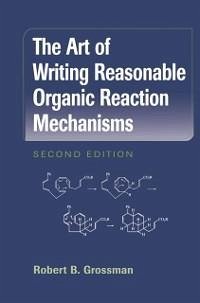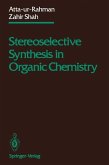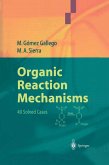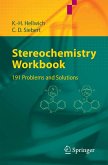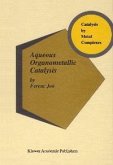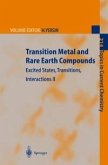Intended for students of intermediate organic chemistry, this text shows how to write a reasonable mechanism for an organic chemical transformation. The discussion is organized by types of mechanisms and the conditions under which the reaction is executed, rather than by the overall reaction as is the case in most textbooks. Each chapter discusses common mechanistic pathways and suggests practical tips for drawing them. Worked problems are included in the discussion of each mechanism, and "common error alerts" are scattered throughout the text to warn readers about pitfalls and misconceptions that bedevil students. Each chapter is capped by a large problem set.
Dieser Download kann aus rechtlichen Gründen nur mit Rechnungsadresse in A, B, BG, CY, CZ, D, DK, EW, E, FIN, F, GR, HR, H, IRL, I, LT, L, LR, M, NL, PL, P, R, S, SLO, SK ausgeliefert werden.
From the reviews of the second edition:
"... Grossman's book differs from others in the scale of the worked examples. The number of problems incorporated into the text is extraordinary. The author provides the student a Web site that includes the detailed mechanisms for every problem in the book, each of which includes explanation and commentary, and the answer set, when printed, exceeds 250 pages! . . . In style, The Art of... is unique in that it does not read like a typical textbook. Instead, the feel is like that of having a personal tutor next to you walking you through the chemistry in a step-by-step fashion. The writing is clear, concise, engaging, and, at times, outright entertaining. The lively style includes "Common Error Alerts" that teach students what not to do and includes tips and advice on how to solve problems . . . The highest compliment a reviewer can give is to adopt the text that he reviews. The next advanced course I teach will use The Art of Writing Reasonable Reaction Mechanisms with the goal that students will be able to posit a plausible mechanism for any new reaction that they encounter. To those of you who have taught traditional physical organic chemistry out of the classic texts, I ask you to consider trying something, well... completely different. The Art of Writing Reasonable Reaction Mechanisms might just change the way you do things."
-Journal of Chemical Education
"The Art of Writing Reasonable Organic Reaction Mechanisms has an entirely different scope, dedicated to teaching the application of first principles to the construction of organic mechanisms. ... The number of problems incorporated into the text is extraordinary. The author provides the student a Web site that includes the detailed mechanisms for every problem in the book ... . The writing is clear, concise, engaging and, at times, outright entertaining. ... All sections are expertly written, well organized andup-to-date." (R. W. Holman, Journal of Chemical Education, Vol. 80 (11), 2003)
"In principle, most mechanisms are derived from a basis set of fundamental steps. ... Grossman has succeeded in explaining these fundamentals in detail in an easily accessible monograph. ... Readers can reinforce their incipient skills with practical illustrations, and are challenged throughout with complicated examples. ... the present text offers additional lucid explanations and ideal opportunities for practice. This work will thus be indispensable for students who are interested in mechanisms, or who wish to gain an additional perspective." (www.organische-chemie.ch, July, 2004)
"This text shows how to write a reasonable mechanism for an organic chemical transformation. ... It can be used either in a formal course or by students working on their own, and will be particularly useful for graduate students studying for qualifying examinations. It will also be useful to students and researchers in biochemistry, pharmacology, and inorganic chemistry." (Chimie Nouvelle, Vol. 84 (21), 2003)
"Robert Grossman in his book attempts to familiarize the student with the awesome power of reaction mechanisms ... . What makes this book special and praise-worthy is the clarity of its presentation of the subject matter. The text is lucid and sharp-edged throughout. The production quality of the book is first-class, too. Paper, printing and binding are excellent, the reproduction of the numerous formulae and reaction schemes is outstanding. ... Full marks for this 'survival guide' to the 'organic jungle'." (T. Lazar, Synthesis, Issue 17, 2003)
"The book entitled 'The Art of Writing Reasonable Organic Reaction Mechanisms' ... shows how to write a reasonable mechanism for an organic chemical transformation. The discussion is organized by types of mechanisms and the conditions under which the reaction is executed, rather than by the overall reaction as is thecase in most textbooks. ... Each chapter is capped by a large problem set. ... The book will be useful to students and researchers in intermediate organic chemistry, biochemistry, pharmacology, and inorganic chemistry." (Process - Magazin für Chemietechnik, Vol. 6 (3), 2003)
"Robert Grossman discusses ideas on organic chemical reactivity, selectivity and structure in a logical way that gives the student confidence in attempting the many practice problems provided. ... This book provides a snapshot of examples of how to consider and approach the writing of simple and sophisticated examples of pushing electrons in and out of orbitals. Students will enormously benefit from using the principles and concepts in this book in writing their own mechanisms." (Helmut Hügel, Chemistry in Australia, 2003)
"... Grossman's book differs from others in the scale of the worked examples. The number of problems incorporated into the text is extraordinary. The author provides the student a Web site that includes the detailed mechanisms for every problem in the book, each of which includes explanation and commentary, and the answer set, when printed, exceeds 250 pages! . . . In style, The Art of... is unique in that it does not read like a typical textbook. Instead, the feel is like that of having a personal tutor next to you walking you through the chemistry in a step-by-step fashion. The writing is clear, concise, engaging, and, at times, outright entertaining. The lively style includes "Common Error Alerts" that teach students what not to do and includes tips and advice on how to solve problems . . . The highest compliment a reviewer can give is to adopt the text that he reviews. The next advanced course I teach will use The Art of Writing Reasonable Reaction Mechanisms with the goal that students will be able to posit a plausible mechanism for any new reaction that they encounter. To those of you who have taught traditional physical organic chemistry out of the classic texts, I ask you to consider trying something, well... completely different. The Art of Writing Reasonable Reaction Mechanisms might just change the way you do things."
-Journal of Chemical Education
"The Art of Writing Reasonable Organic Reaction Mechanisms has an entirely different scope, dedicated to teaching the application of first principles to the construction of organic mechanisms. ... The number of problems incorporated into the text is extraordinary. The author provides the student a Web site that includes the detailed mechanisms for every problem in the book ... . The writing is clear, concise, engaging and, at times, outright entertaining. ... All sections are expertly written, well organized andup-to-date." (R. W. Holman, Journal of Chemical Education, Vol. 80 (11), 2003)
"In principle, most mechanisms are derived from a basis set of fundamental steps. ... Grossman has succeeded in explaining these fundamentals in detail in an easily accessible monograph. ... Readers can reinforce their incipient skills with practical illustrations, and are challenged throughout with complicated examples. ... the present text offers additional lucid explanations and ideal opportunities for practice. This work will thus be indispensable for students who are interested in mechanisms, or who wish to gain an additional perspective." (www.organische-chemie.ch, July, 2004)
"This text shows how to write a reasonable mechanism for an organic chemical transformation. ... It can be used either in a formal course or by students working on their own, and will be particularly useful for graduate students studying for qualifying examinations. It will also be useful to students and researchers in biochemistry, pharmacology, and inorganic chemistry." (Chimie Nouvelle, Vol. 84 (21), 2003)
"Robert Grossman in his book attempts to familiarize the student with the awesome power of reaction mechanisms ... . What makes this book special and praise-worthy is the clarity of its presentation of the subject matter. The text is lucid and sharp-edged throughout. The production quality of the book is first-class, too. Paper, printing and binding are excellent, the reproduction of the numerous formulae and reaction schemes is outstanding. ... Full marks for this 'survival guide' to the 'organic jungle'." (T. Lazar, Synthesis, Issue 17, 2003)
"The book entitled 'The Art of Writing Reasonable Organic Reaction Mechanisms' ... shows how to write a reasonable mechanism for an organic chemical transformation. The discussion is organized by types of mechanisms and the conditions under which the reaction is executed, rather than by the overall reaction as is thecase in most textbooks. ... Each chapter is capped by a large problem set. ... The book will be useful to students and researchers in intermediate organic chemistry, biochemistry, pharmacology, and inorganic chemistry." (Process - Magazin für Chemietechnik, Vol. 6 (3), 2003)
"Robert Grossman discusses ideas on organic chemical reactivity, selectivity and structure in a logical way that gives the student confidence in attempting the many practice problems provided. ... This book provides a snapshot of examples of how to consider and approach the writing of simple and sophisticated examples of pushing electrons in and out of orbitals. Students will enormously benefit from using the principles and concepts in this book in writing their own mechanisms." (Helmut Hügel, Chemistry in Australia, 2003)

